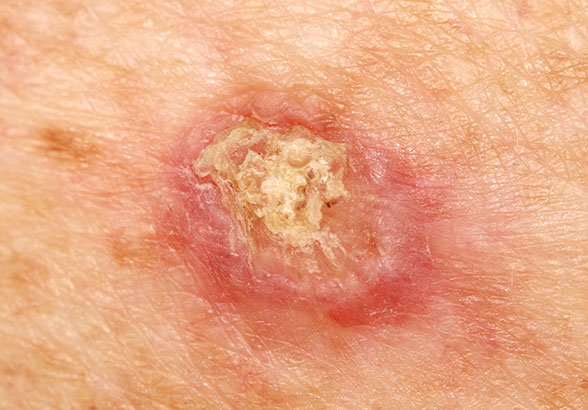Squamous cell carcinoma (SCC)

Squamous cell carcinoma (SCC) of the skin is the second most common form of skin cancer. They are due to abnormal growth of squamous cells. One of three main types of cells in the top layer of the skin, squamous cells are flat cells located near the surface of the skin that shed continuously as new ones form.
SCC occurs when DNA damage from exposure to the sun’s ultraviolet radiation triggers abnormal changes in the squamous cells. An SCC appears as scaly red patches, open sores, rough, thickened or wart-like skin, or raised growths with a central depression. At times, SCCs may itch or bleed. The lesions arise most commonly in sun-exposed areas of the body, but can also occur in other areas of the body, including the genitals.
SCCs look different on everyone. While the majority of SCCs can be easily and successfully treated, if allowed to grow, these lesions can become disfiguring, dangerous and even deadly. Untreated SCCs can become invasive, grow into deeper layers of skin and spread to other parts of the body. It’s important to look for new, changing or unusual skin growths to ensure early treatment of SCC.
Mohs surgery is the most effective treatment for cutaneous SCC, offering the highest rate of cure and best cosmetic outcomes.
We Care About You
© 2024 • All Rights Reserved • Juniper Dermatology
